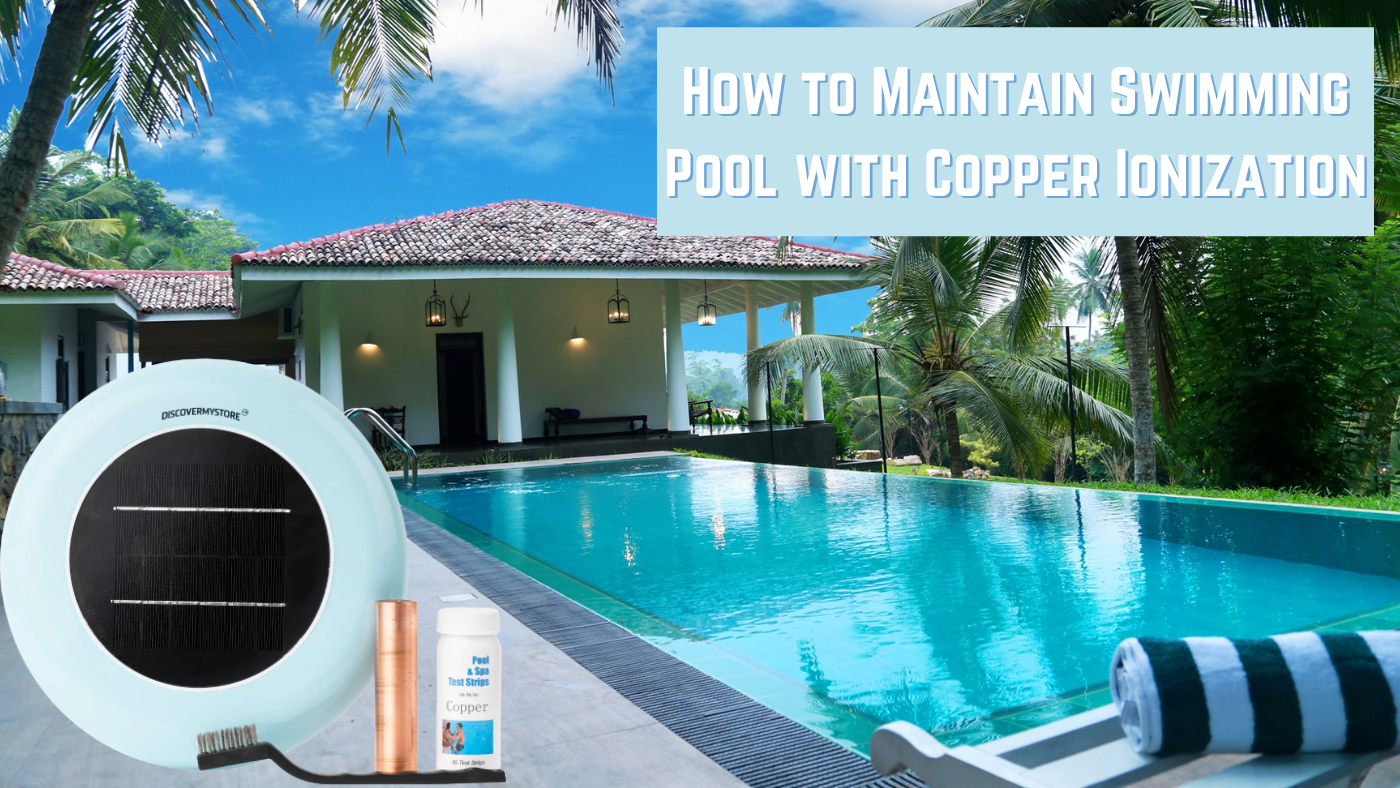
In this post, we will talk about how to maintain a swimming pool using copper ionizers. The main components of most mineral pool systems are silver or copper. The same tips apply to both copper and silver ionizers.
The main advantage of mineral ionizers is that they can eliminate the need for additional chemicals to maintain a clean and balanced pool. However, some manufacturers claim that they don't require any chemicals.
Mineral Electrodes
Ionizers use a current to release minerals into the water. This process occurs when an electrical current passes through a plate or electrode that's connected to a hot tub or pool. The electricity then moves from one plate to another, releasing mineral ions.
The release of mineral ions can help control algae and bacteria in pools and spas by acting as an effective disinfectant. Over time, the plates on the ionizers will wear down. It's important to regularly check the electrodes to make sure that they haven't worn out completely.
If the plates on the ionizers are not working properly, the pool will be susceptible to various problems, such as algae and bacterial growth.
Although it's usually recommended to replace the electrodes every season, it's also important to keep in mind that the ionizers can wear out faster if the water gets too warm. This is because the first set of electrodes needs to be replaced faster to keep the minerals in the water. However, since the ionizers are very stable, replacing the second set of electrodes might not be necessary.
Bromine & Chlorine
Many health organizations support the use of mineral ionizers. They also suggest a lower level of bromine or chlorine to maintain a clean and balanced pool.
Some mineral ionizer manufacturers also suggest using specific compounds, such as bromine or chlorine, to maintain a balanced and clean pool. However, this is not necessary. Any type of chlorine will do the trick.
One of the most common types of chlorine that's used to maintain a balanced and clean swimming pool is a 3” stabilized chlorine tablet. This can be added to the water every two weeks.
Although some people might think that adding tablets to the floater or the skimmer will damage the equipment, this isn't a big deal since the tablets only add a small amount of chlorine to a mineral pool.
If you have an in-line chlorine system, you can add multiple tablets at once to maintain a clean and balanced water pool.
Shocking Pool
The use of shocking is also a way to remove excess organic matter from the water. This process can help prevent the buildup of harmful chemicals in the water.
Ionized pools can also be used to shock the water after heavy rainfall or heavy usage. Follow the directions provided by the shock product.
You can also use a non-chlorine super-oxidizer. This type of shock is usually potassium monopersulfate-based.
pH Levels
A balanced pH level is important to maintain a healthy and balanced pool. The ideal range is between 7.2 to 7.6. Anything outside this level can affect the effectiveness of the chlorine.
When acidic water is used to ionize, it can lead to copper staining on the surface and lining of the pool. Having a regularly monitored pH level is also important to prevent this issue.
Unlike traditional chlorine pools, ionized pools do not have a constant fluctuation in the pH level. They are pH neutral, which means they can absorb less copper and other minerals to cause staining.
Getting a water sample to test your pH level is the easiest way to do so. Usually, a local pool store will give you a free test and suggest products that will help raise or lower the pH. You can also test the water at home using a test kit.
Alkalinity
The level of alkalinity in an ionized pool should be similar to that of a regular pool. The ideal range is from 80 to 120 parts per million. If you have a local store nearby, they can also test the water and provide you with the appropriate products.
Unlike regular pools, ionized pools do not have a drastic change in their pH level. However, it's important to regularly test the water to maintain a healthy and balanced level. Having a properly balanced level of alkalinity can help prevent the pH level from going out of range.
TDS & Calcium
The recommended level of calcium is 200 to 400 ppm. The level of total dissolved solids (TDS) is 500 to 2,000 ppm. High levels of calcium can lead to the scaling of the electrodes, which usually happens after around one to three seasons. If this happens, you can file a metal file to remove the scale.
Chelating Agents
It's also important to use a chemical that can keep the minerals in the water at a low level. This can help prevent them from collecting on the surface of the pool.
The best time to use a chemical is when you open the pool in the spring and close it in the fall. This will allow you to get the most out of the mineral cell and keep it healthy.
If you have any other questions about pool and spa products please do let us know - we are here to help!
Also don't forget to subscribe to our YouTube channel and check out our videos with other great pool and spa products!



